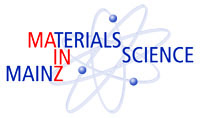


Physikalisches Kolloquium
June 7, 2022 at
4:15 p.m.
in
HS KPH
Prof. Dr. Friederike Schmid
Institut für Physik
friederike.schmid@uni-mainz.de
Prof. Dr. Hartmut Wittig
Institut für Kernphysik
hartmut.wittig@uni-mainz.de
How living matter self-organizes while breaking action-reaction symmetry
Ramin Golestanian (MPI Göttingen)
There are many ways to study life, and one that is particularly appealing to physicists is regarding it as self-organized active soft matter that is away from equilibrium ``just the right way’’. In this Colloquium, I will discuss this notion, and provide a number of examples of how we can begin to put together simple systems - from basic ingredients that we fully understand - that would exhibit the kind of active behaviour we find in living systems. In particular, I will discuss the general class of chemical activity both as the source of non-equilibrium drive and the underlying mechanism for self-organization. Cells and microorganisms produce and consume all sorts of chemicals, from nutrients to signalling molecules. The same happens at the nanoscale inside cells themselves, where enzymes catalyze the production and consumption of the chemicals needed for life. In this colloquium, I will discuss a generic mechanism by which such chemically-active particles, be it cells or enzymes or engineered synthetic colloids, can "sense" each other and ultimately self-organize in a multitude of ways. A peculiarity of these chemical-mediated interactions is that they break action-reaction symmetry: for example, one particle may be repelled from a second particle, which is in turn attracted to the first one, so that it ends up "chasing" it. Such chasing interactions allow for the formation of large clusters of particles that "swim" autonomously. Regarding enzymes, we find that they can spontaneously aggregate into clusters with precisely the right composition, so that the product of one enzyme is passed on, without lack or excess, to the next enzyme in the metabolic cascade. Finally, I will discuss how breaking the action-reaction symmetry can allow a system described by two scalar fields to exhibit spontaneous breaking of time translation, time-reversal, space translation, and polar symmetries.